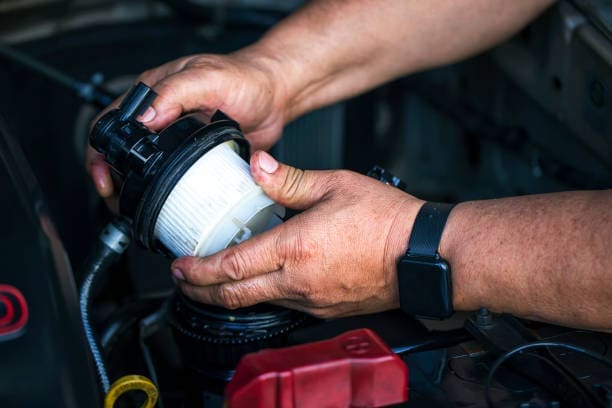How Often Should You Service a DPF Filter plays a critical role in modern diesel vehicles, helping to reduce emissions and comply with stringent environmental regulations. However, maintaining and servicing these filters is essential to ensure optimal performance and longevity of both the filter and the vehicle itself. This comprehensive guide explores everything you need to know about servicing a DPF filter, including its function, signs of potential issues, servicing intervals, maintenance tips, and the importance of regular upkeep.
Understanding Diesel Particulate Filters (DPFs)
Table of Contents
Toggle
What is a PDF?
- Function: Traps and reduces particulate matter (soot) emitted by diesel engines.
- Composition: Made of ceramic or metal fibers designed to capture particulates.
- Regeneration: Process where accumulated soot is burned off to maintain efficiency.
Importance of DPFs
- Environmental Compliance: Helps vehicles meet emission standards.
- Engine Performance: Ensures optimal engine operation and fuel efficiency.
- Longevity: Protects engine components from soot-related damage.
Signs That Your DPF Requires Servicing
Warning Signs
- Dashboard Warning Lights: DPF warning or regeneration alerts.
- Reduced Performance: Loss of power, sluggish acceleration.
- Increased Fuel Consumption: Efficiency decreases due to clogged filters.
- Strange Noises: Unusual sounds from the engine or exhaust system.
Visual Inspection
- Soot Build-Up: Visible soot deposits on the exhaust pipe or around the DPF.
- Physical Damage: Cracks, leaks, or structural issues in the DPF housing.
Servicing Intervals for DPF Filters
Manufacturer Recommendations
- Vehicle Manual: Follow manufacturer guidelines for specific servicing intervals.
- Typical Intervals: Generally recommended every 75,000 to 150,000 miles.
- Usage Factors: Frequency may vary based on driving conditions and vehicle usage.
Monitoring and Adaptive Systems
- Onboard Diagnostics: Systems that monitor DPF health and trigger regeneration.
- Adaptive Regeneration: Adjusts regeneration cycles based on driving patterns.
DPF Maintenance Practices
Regular Inspections
- Visual Checks: Monitor for soot accumulation and signs of damage.
- Diagnostic Tools: Use OBD-II scanners to check for DPF-related error codes.
Driving Habits
- Highway Driving: Helps maintain DPF health by promoting passive regeneration.
- Avoid Short Trips: Insufficient heat during short trips can hinder regeneration.
Fuel Quality
- Use of Low-Sulfur Diesel: Reduces particulate matter emissions and DPF stress.
- Fuel Additives: Some additives can aid in DPF cleaning and maintenance.
DPF Cleaning Methods
Passive Regeneration
- Highway Driving: Generates sufficient heat to burn off accumulated soot passively.
- Automatic: Modern vehicles initiate regeneration cycles automatically when needed.
Active Regeneration
- Forced Regeneration: Mechanic-initiated process using diagnostic equipment.
- Manual Regeneration: Driver-initiated process in response to warning lights.
Professional Cleaning Services
- DPF Cleaning Specialists: Use specialized equipment for thorough cleaning.
- Ultrasonic Cleaning: Effective method for removing stubborn soot deposits.
Importance of Timely DPF Servicing
Performance Optimization
- Maintained Efficiency: Ensures optimal fuel economy and engine performance.
- Emission Control: Meets regulatory standards and reduces environmental impact.
- Preventive Maintenance: Reduces the risk of costly repairs due to DPF failure.
Longevity and Durability
- Extended Lifespan: Regular servicing enhances DPF durability and longevity.
- Engine Protection: Prevents soot-related damage to engine components.
Cost Considerations

Servicing Costs
- Routine Maintenance: Regular inspections and minor cleaning are relatively inexpensive.
- Replacement: Costs vary based on DPF type and vehicle model.
Cost-Benefit Analysis
- Avoiding Repairs: Timely servicing mitigates risks of expensive repairs or replacements.
- Fuel Savings: Maintains fuel efficiency and reduces overall operating costs.
DIY vs. Professional Servicing
DIY Maintenance
- Visual Inspections: Regular checks for soot buildup and damage.
- Driving Habits: Adapt driving practices to promote DPF health.
Professional Services
- Expertise: Trained technicians ensure thorough inspection and proper servicing.
- Warranty Coverage: Some warranties require professional servicing for compliance.
Conclusion
Servicing a DPF filter is crucial for maintaining the health and efficiency of diesel vehicles. By understanding the function of DPFs, recognizing signs of potential issues, and adhering to recommended servicing intervals, vehicle owners can ensure their DPFs operate optimally. Regular inspections, appropriate driving habits, and occasional professional servicing all contribute to prolonging the lifespan of the DPF and preventing costly repairs. Ultimately, prioritizing DPF maintenance not only enhances vehicle performance and fuel economy but also supports environmental sustainability by reducing harmful emissions.



